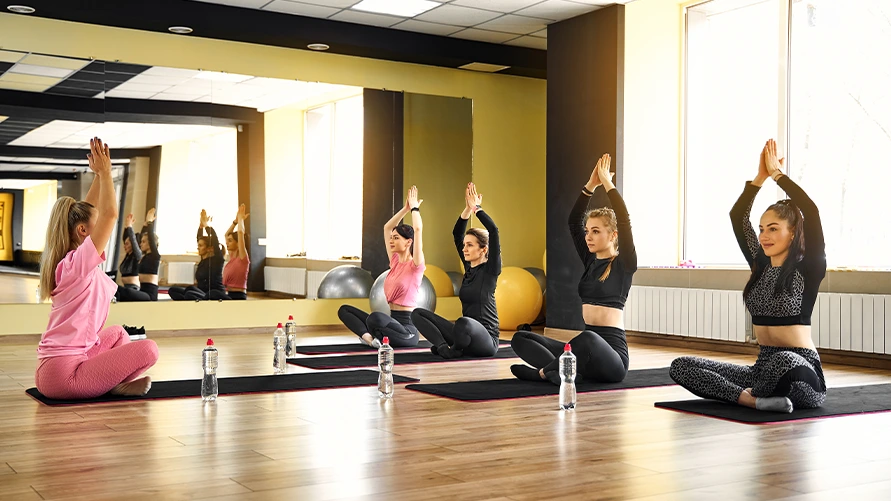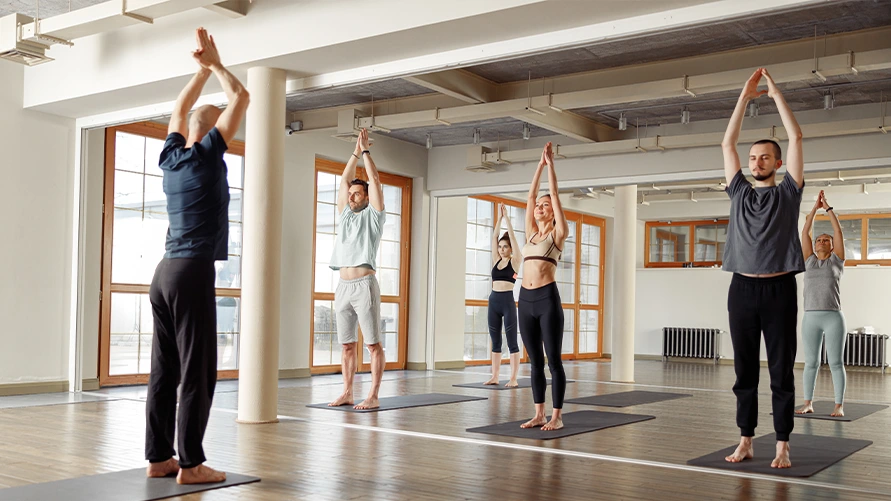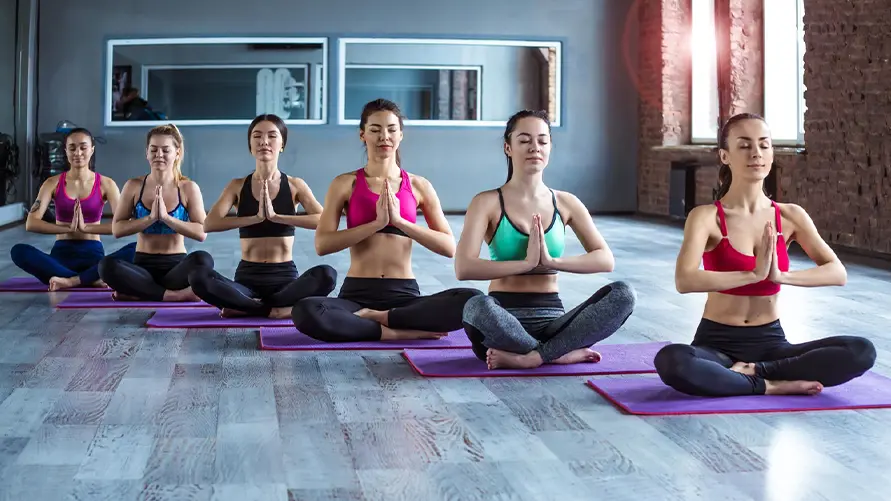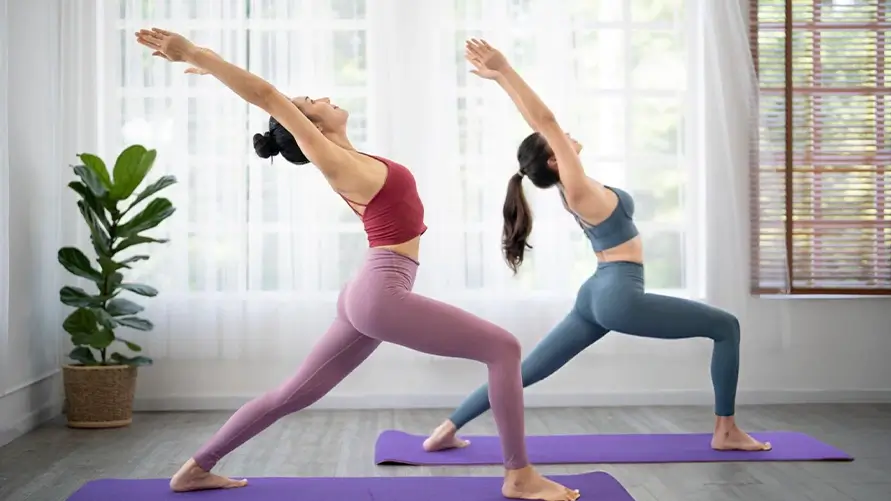If you want to become a yoga instructor, you need a yoga instructor certification to get started. It gives you the skills to teach safely, the credibility to be hired, and the knowledge to guide students responsibly. While most countries don’t legally require certification, almost every studio, gym, or insurer will ask for it. So, if you’re serious about teaching, certification is the foundation.
What is a yoga instructor certification?
A yoga instructor certification proves that you have completed formal training at a Registered Yoga School (RYS). Most aspiring yoga teachers start with a 200-hour Yoga Teacher Training (YTT) program.
Certification is not legally required in most countries. However, without it, many studios, gyms, and insurance providers won’t hire or cover you. So, think of your yoga certification as your professional license to teach, even if not technically mandated by law.

The role of Yoga Alliance
In the West, the most recognized credentialing body is Yoga Alliance, a U.S.-based nonprofit that sets global standards for teacher training. Completing your training through a Yoga Alliance-registered school allows you to register as an RYT (Registered Yoga Teacher).
Being registered as an RYT doesn’t make you a better yogi, but it adds a layer of trust. Studios often prefer it, students search for it, and insurance companies recognize it. Registration is optional, but for teachers, it is worth the annual membership.
Types of yoga instructor certifications
Not all certifications carry the same weight. Different levels reflect the depth of training and experience.
| Credential | Requirement | What it means |
| RYT 200 | 200-hour YTT at a Yoga Alliance RYS | The entry-level credential. Required by most studios for new teachers. |
| RYT 500 | 500-hour YTT, or 200 + 300 hours combined | A more advanced level, offering study of philosophy, anatomy, and teaching. |
| E-RYT 200 | 200-hour YTT + 1000 teaching hours over 2 years | Marks an experienced teacher who can train new instructors. |
| E-RYT 500 | 500-hour YTT + 2000 teaching hours over 4 years | The top-tier designation for senior instructors and program leaders. |
| Specialty certs | Training beyond RYT 200 | Includes prenatal yoga (RPYT), children’s yoga (RCYT), and yoga therapy training. |
Apart from general training programs, special certification allows yoga trainers to focus on specific groups. Specialty certifications help teachers expand into niches where demand is strong, such as schools, pregnancy care, or therapeutic yoga.
Certification formats: Online, Hybrid, and in-person
Yoga training has adapted to modern lifestyles. You no longer need to fly to India or Bali unless that is your preference. Programs are now available in several formats:
- Online (self-paced): learn through recorded lessons and readings. Prices range from $200 TO $3,000. Flexible but requires discipline.
- Online (live): Conducted over video calls with set schedules. Costs about $500 to $2,500. Offers real-time feedback.
- Hybrid: Mix of online study and in-person retreats or workshops. Expect $1,000 to $5,000. Popular for balancing flexibility with immersion.
- In-person/Immersive: traditional style, often at studios or destinations like India, Thailand, or Bali. Fees range from $1,000 to $7,000+. Provides the richest cultural and practical experience.
Choosing a format depends on your budget, learning style, and availability. If you want maximum credibility, make sure the school is a Yoga Alliance Registered Yoga School (RYS).
How much does a yoga instructor certification cost?
Costs vary widely. Location plays a huge role. A 200-hour YTT in the U.S or Europe typically runs between $2,000 and $3,500. Online programs are often cheaper, starting at $200, but not all are Yoga Alliance-approved.
Factors that price include:
- The reputation of the teachers and the school.
- Whether housing, meals, or retreats are included.
- The country where the training takes place.
Some schools offer scholarships, early-bird discounts or payment plans. Always check what’s included in the fee before enrolling. And wisely choose the right yoga school that aligns with your budget and the curriculum you are looking for.
Global recognition of certifications
If you are planning to teach internationally, Yoga Alliance credentials are widely accepted in North America, Europe, and parts of the Asia-Pacific. However, some countries also recognize certifications from other bodies, like:
- International Yoga Federations (IYF)
- British Wheel of Yoga (UK-specific)
- International Association of Yoga Therapists (IAYT)
Before signing up, confirm whether your target teaching location has specific requirements.
Insurance and legal requirements
While not always highlighted, yoga insurance is a crucial piece of becoming a professional yoga instructor. Many insurers only cover teachers who hold an RYT certification. Liability coverage protects you if a student is injured or makes a claim.
In some regions, gyms or studios may require proof of both certification and insurance before hiring you. This is less about legal enforcement and more about risk management.
Steps to becoming a certified yoga instructor
The process of becoming a yoga instructor can be broken down into a few clear steps:
- Choose a Registered Yoga School (RYS) that aligns with your goals and budget.
- Complete a 200-hour YTT, either online, hybrid, or in person.
- Receive your certificate and, if you choose, register with Yoga Alliance.
- Purchase liability insurance to cover yourself professionally.
- Start teaching and gaining experience, either in studios, gyms, or your own classes.
- Advance to higher levels, such as the 300-hour or 500-hour YTT, when ready.
Final thoughts
Becoming a certified yoga instructor is both an investment and a commitment. The 200-hour YTT is the universal entry point, but the path doesn’t end there. With advanced training, specializations, and continued learning, you can build a long, rewarding career.
Choose your schools wisely, budget carefully, and always prioritize programs that combine credibility with quality teaching. Certification opens the door. What you do next with it is up to you.
FAQS on yoga instructor certification
Do I need certification to teach yoga?
Legally, no in most countries. Professionally, yes, most employers require it.
How long does it take to become a beginner-level trainer?
A 200-hour YTT typically takes 3 to 6 months part-time, or 3 to 4 weeks full-time in immersive programs.
Is online certification valid?
Yes, if it is from a Yoga Alliance-approved RYS. Always check accreditation.
Can I specialize later?
Yes, once you have completed RYT 200, you can pursue niche areas like prenatal or children’s yoga.





